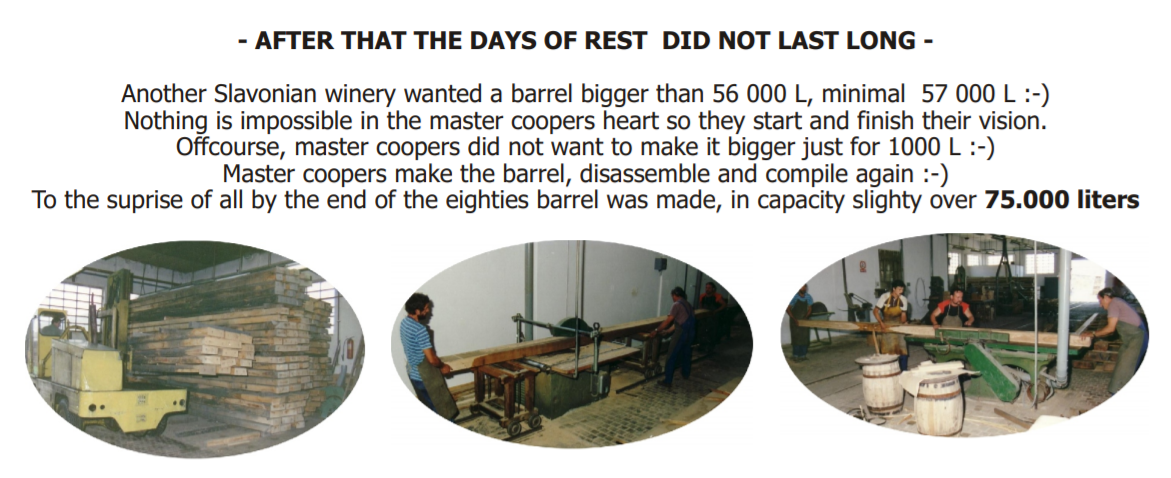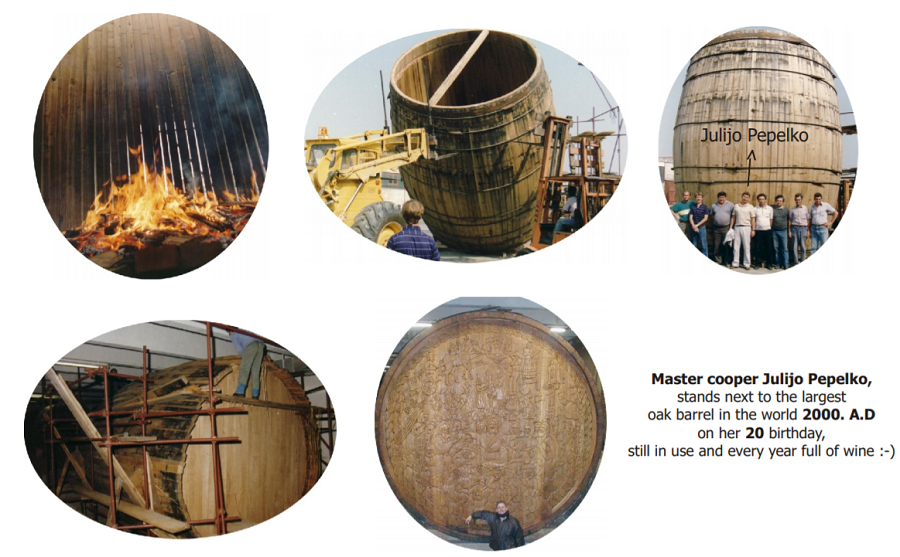Croatia Border Town Shaken By Migrant Burglaries: Ilok Locals Live in Fear
While EU politicians, leaders, foreign journalists and human rights organizations play political football, assign blame and discuss solutions for the migrant crisis along the Balkan Route; frightened residents of Croatia border towns, like the town of Ilok, are locking themselves in their homes at night out of fear of burglaries and much worse.
“We are scared! In the middle of the night, we caught migrant burglars circling our house. I thought my son was going to work, but sensed something suspicious and saw two masked people at our front door,” reported one shaken Ilok local.

(Note that Hungary has built an electric fence spanning its border, which has halted migration.)
Croatia Police Not Publicly Reporting Ilok Migrant Burglaries
In the Fall of 2015, during the great migrant crisis, more than half a million migrants passed through Eastern Croatia on their way to more economically desirable Western European countries. Not a single major incident, or even any minor incidents, were reported during the entire relocation process. However, four years later, locals in some border towns in the same part of Eastern Croatia are living in fear, according to Branimir Bradarić/Večernji List on January 25, 2020. Migrants are entering their towns and villages and burglarizing shops, and a recent attempt was even made to break into a house. There have been also reports of car theft and one incident ended with a car accident in which several migrants were injured while trying to escape authorities in a stolen vehicle.
All this has happened over the last half year but there were signs of trouble even before then. However the police have avoided discussing these burglaries in their regular reports the media. Therefore, frightened residents have decided to go public with these incidents on their own. The situation has deteriorated most notably in the Eastern Croatia city of Ilok, where residents are no longer willing to remain silent about their fears for safety in their own homes.
Frightened Ilok Residents Reporting Migrant Burglaries Directly to Media
The last in a series of frightening events occurred ten days ago when two migrants, dressed in dark hooded jackets, tried to break into the home of the Lončar family in Ilok. Remembering that day, Irjana Lončar recalls hearing noises around 4:30am.
“We were sleeping when I heard noises in the yard and by the door. It sounded like someone was walking nearby and I thought it was my son leaving for work. But the lights were off, which was strange, so I got up to see what was happening. At that moment, I saw two unfamiliar masked people at our front door. They were trying to force our door open by destroying the lock with a device, which I think was a drill. I started screaming and yelled for my husband, but the two burglars had escaped by then,” recalls Lončar, who was still trembling with fear.
Since the lock was destroyed, her husband could not get the front door open immediately. After succeeding, he jumped into their car and tried to follow the migrant burglars. Irjana watched from the window as the pair fled down the road. Later, she discovered that the burglars had also been trespassing in their yard and had broken into their attic, where they stole two knives and a knife sharpener. They swiped the Lončar’s New Year's light decorations and made off with her husband's hunting backpack. Then she discovered that the pair had tried to open the kitchen window with a sharp object to enter the house from there. Police responded to her call for help very quickly, but by that time the migrants had long vanished into the darkness.

Ilok Residents Concerned for Safety and Property
“I'm really scared now. From that day, my life has not been the same. I have a difficult time sleeping and am always on the alert for unusual noises. Every little noise will jolt me wide awake as does the sound of barking dogs. I'm afraid that they'll try to break into my house again. And, I'm particularly scared because nobody knows what these people are prepared to do. Nor does anyone know what they would have done if they had entered our house, or how it all could have ended. We just want to feel safe in our town again, and especially safe in our own home. Unfortunately, that's not the case anymore,” Lončar admits.
She adds that, after their burglary, they started hearing about several similar break-ins throughout town – and other locals have witnessed migrants breaking into homes. She claims that there are currently several unoccupied houses in Ilok, and migrants are breaking into them so they can hide temporarily before continuing their journey further into the interior of Croatia and the rest of Europe.
The Ilok locals have also reported finding discarded clothing all over town as migrants change their clothes before continuing their journey westward. There have also been reports of migrants crossing the border and continuing down the road before they are caught by police.
Ilok Break Ins and Burglaries Widespread
Jadranka Tomašić’s shop has also been hit by migrants. They have succeeded in burglarizing her shop in two out of three attempts. In both of those cases, according to Tomašić, they stole certain brands of cigarettes, some alcohol and Nescafé. About 20,000 HRK (2687 EUR) of merchandise has been stolen from her shop, and the front door of her store was damaged too. They also ran off with all the cash they found.
“I do not feel safe here anymore, and I am not the only one. Other Ilok residents don’t feel safe in their town either. In addition to everything else, you can see the effects of fear in front of elementary schools at the end of the school day. Parents are now coming to school in cars to pick up their children. People are locking themselves in their homes before dark and are avoiding going out in the evening. No matter how you look at it, the situation is not at all simple or straightforward,” Tomašić reveals with concern.
She adds that in addition to the burglaries in her shop, there have been burglaries in the suburban settlements of Bapska and Šarengrad. After the burglary in Šarengrad, the perpetrators were apprehended. After one of the burglaries at her store, a large knife was found, which was to be believed to have belonged to migrants. She also recalls a situation that occurred last summer when a migrant tent was found in a corn field across the street from her store, during the corn harvest. It was in a populated part of Ilok and nobody aware of that it was there until the harvest.

‘We just want to live and work normally’
“We just want to live and work normally, but that's not the case now. The worst part is that feeling of insecurity. These people have shown no fear, and that is why we are very afraid. It really bothers me that nobody is talking about this. I have no objection to the job the police are doing and do not expect that they, or the mayor, will be able do something overnight. They cannot do anything because they do not have the necessary tools, but this problem must be addressed in a systematic way,” Tomašić points out. She adds that many locals have been reporting burglaries, including those who have had their safes broken into and contents stolen.
The well-known Ilok agronomist and winemaker Ivan Buhač was also hit by migrants, but he managed to avoid burglary. He left his unlocked vehicle parked outside his house. Someone entered it and wanted to start it up and drive off. As the keys were not inside; they emptied the vehicle in search for the keys. However, the car itself was undamaged.
“The fact is that these incidents, which are extremely unusual for Ilok, happen regularly now and so it's not surprising that people do not to feel safe. Recently, burglaries and attempted burglaries have been reported in people’s homes. We all hope that this will all end soon and that we can go back to living normally, because this is not definitely the case now,” Buhač admits.
Commenting on recent events, Ilok Mayor Marina Budimir says the city authorities are aware of the problem and are in constant contact with the Croatia Interior Ministry and police in Ilok.
Ilok Police and Mayor: No Reason to Panic
“Everyone is working as hard as they can to resolve this problem, but I don't think there is any reason to panic. The problem is very present, and it’s important to compare how our residents live now as opposed to before: how they move about in town and go to work and school. Unfortunately, this problem in Ilok will continue since we are right on migrant route through Croatia from Serbia and beyond. Another problem is that the migrant camp in Serbia is located near the border crossing. Migrants are housed there, but they can leave the camp freely. That's why this is happening,” says the frustrated mayor.
She is also quick to point out that she has demanded increased police surveillance of the border and adds that there haven’t been any reported attacks on residents so far. The mayor also indicates that movement over the eastern border will be harder to detect as vegetation begins to grow again, which will make monitoring more difficult. Nevertheless, police have surveillance equipment in place. Indeed, police patrols are more visible in Ilok and the surrounding area. Unofficial reports from the police indicate that the border has been steadily monitored for months, and that the burglaries and break-ins in Ilok are indeed a problem, but they do not consider this problem dangerous because there haven't been any reports of violence or threats.
Croatia Police Point Out Two Types of Migrants
They also explain that the two types of migrants should be distinguished. There are passers-by who are trying to somehow cross the border illegally and move on. The others, who are thought to be causing the problems in Ilok, are located along the border crossing at the camp in Principovac, which they consider to be the main issue. They can move freely in that camp, and illegally cross the Croatian border to steal from locals so that they can raise money for travel to the West.
The stolen goods are then resold at the migrant camp, which was confirmed by the recent case of two migrants who were arrested after breaking into a shop in Šarengrad. After that, police claim, the burglary indicents stopped. Officers understand the Ilok residents’ sense of insecurity but say that there is absolutely no reason to panic and that the police are on the ground doing their job.
Follow our Politics page for updates on the migrant crisis in Croatia.
Could Croatian Industrial Hemp Help to Brand Parts of Slavonia?
Slavonia is constantly overlooked in favour of either the rest of continental Croatia, the City of Zagreb, and of course, the glorious Adriatic coast, which, with its glitz, glam and fancy yachts is a far cry from the often harsh and sad realities of life in the Eastern Croatian region of Slavonia. It isn't just tourism that is lacking, but industry. With people abandoning this part of Croatia in their droves, could Croatian industrial hemp perhaps revitalise production in the east?
As Novac writes on the 11th of January, 2020, Marinko Marušić, director and one of the founders and owners of a company from Donji Miholjac which grows and processes Croatian industrial hemp and sells food and cosmetics from this valuable plant stated that his story began ten years ago.
''Our story began a decade ago when Croatia revitalised the cultivation, processing and sale of Croatian industrial hemp, which has long been in disrepute. Initially, we went ahead rather intensively with our research. After seven years of learning in collaboration with the profession, as of last year we began to develop the brand Miholjačka hemp, because, analysing the microclimatic position, we realised that the area along the Drava river is a godsend for growing high quality hemp,'' pointed out Marušić.
In addition to oil, seeds, protein flour and teas sold under the brand Miholjačka hemp, they also sell other products such as chips, candies, chocolates, and other types of snacks.
According to Marusic, who spoke with local portal Glas Slavonije, Miholjačka hemp was created as a project of many years of research by enthusiasts whose goal has been to return top quality products from plant and Croatian industrial hemp seeds to Slavonian fields and to promote both nutritional and health values.
''The profession has been following us from the beginning. We cooperate with the faculties of agriculture in Osijek and Zagreb, the companies Saponia and Kandit in Osijek, Kanaan from Donji Miholjac and Meden from Sveti Đurđ. We can produce top quality raw materials, but food and cosmetics require certain standards,'' he explains.
In addition, their company brings together several subcontractors, with whom they sow Croatian industrial hemp on about thirty hectares of land in the area of Donji Miholjac and its immediate surroundings.
''We're constantly working on developing new products, increasing their quality and expanding our sales here in Croatia. We've also dipped our toes into cooperation with companies from America, Portugal, Spain and Brazil. In addition, Saponia is accompanying us in its research laboratory to develop new formulas for obtaining hemp-containing products.
Generally speaking, our idea is first of all to brand Eastern Croatia as a centre for hemp, which in itself will allow us and all other growers to have a much easier time on foreign markets. I think that hemp can revive neglected land resources in the area,'' concluded Marušić.
Follow our dedicated Made in Croatia and lifestyle pages for more.
Five Slavonian Tourist Boards Come Together for First Time to Promote Region
December 16, 2019 - Five Slavonian tourist boards have teamed up for the first time to promote the beauties and tourist offer of Slavonia.
HRTurizam writes that under the symbolic name "Divani", a presentation of this unique region was held at Procaffe Cafe in the heart of Zagreb, with premium Slavonian wines and the finest dishes signed by the Danube hotel in Ilok, the first to boast a Michelin recommendation in that part of Croatia.
Martina Jakelic, director of the Virovitica-Podravina County Tourist Board, Maja Jakobovic Vukusic, director of the Pozega-Slavonia County Tourist Board, Ruzica Vidakovic, director of the Brod-Posavina County Tourist Board, Mislav Matisic, Assistant Director of the Osijek-Baranja County Tourist Board, and Rujana Busic Srpak, director of the Vukovar-Srijem Tourist Board, who is also the coordinator of the Slavonia Cluster, presented the tourist attractions of the easternmost Croatian region.
This is a strong and concrete step in promoting and presenting Slavonia as a Croatian tourist destination, pointed out Rujana Busic Srpak, and added:
“With the cooperation agreement in creating and promoting the Slavonia tourism brand, signed last year by all five county tourist boards, the Croatian National Tourist Board and the Ministry of Tourism, we have defined the frameworks and activities that we want to achieve our ultimate goal - product development and promotion as a generator for increasing tourism results. None of the signatories can achieve this goal alone, and therefore togetherness in readiness to accomplish all that Slavonia can do in tourism is a key success factor. We still have a lot to boast. As a new approach to promotion, the first step was to develop a strategic marketing plan for Slavonia tourism with a branding plan for 2019-2025, which will soon be adopted, the Slavonia brochure came out of the press this year, and joint appearances at fairs and special presentations have already yielded first results,” points out Rujana Busic Srpak.
Slavonia is a destination that has everything to offer 365 days a year, said Mislav Matisic, Assistant Director of the County of Osijek-Baranja Tourist Board, and added:
“One of the main motives for arrivals is gastronomy, and we also have the Kopacki rit and Papuk nature parks which are divine in every season. Slavonia offers the most beautiful blend of tradition and urban life, and all who come for the first time are delighted when they taste the colors and scents, experience the mighty Danube, but also the Sava and Drava, the vast vineyards, the Golden Valley, the Noble Route and discover that Slavonia is not just an endless plain. Just look at Pozeska gora, Psunj and Papuk, Erdut and Bansko Brdo. With us, you can ride a bicycle, quads, kayak, climb in adrenaline parks in Zlatna Gora and Papuk…” said Matic.
Although there is still a long way to go to define a well-rounded Slavonia tourism brand, this first historic step towards joint promotion and synergy should be commended.
To read more about travel in Croatia, follow TCN’s dedicated page.
Connecting Croatia's Green and Blue: Direct Flights Between Osijek and Dubrovnik Soon?
December 5, 2019 - Croatia's eastern and coastal parts, or the country's 'green and blue', should be connected by a direct flight between Osijek and Dubrovnik, believe the prefects of Dubrovnik-Neretva County and Vukovar-Srijem County.
The prefect of Dubrovnik-Neretva County, Nikola Dobroslavic, with his deputies Zaklina Marevic and Josko Cebalo and other associates, held a working meeting in Dubrovnik on Monday with Vukovar-Srijem County prefect Bozo Galic and his associates, reports Dubrovniknet.hr.
The meeting was also attended by Ivo Klaic, Head of the Managing Board for the Economy and Sea, Melanija Milic, Director of the RDA DUNEA, Nikolina Karaljevic, Head of the Managing Board for County Affairs and County Assembly, Sandra Pinjuh, Head of the Office of Mayors VSŽ, Ilija Cota, Director of RDA Podolar, ZSA Agro-cluster from VSZ and Rujana Busic Srpak, Director of the Vukovar-Srijem County Tourist Board.
At the meeting on continuing cooperation between Dubrovnik-Neretva and Vukovar-Srijem counties and connecting the "Green and Blue Croatia", they agreed on the direction of further activities for the two counties.
“We want to connect agriculture and tourism. Some products, such as eggs from Slavonia, are already used here. We agreed to work in two directions. We are going with an initiative to establish a daily and year-round flight from Dubrovnik to Osijek. Entrepreneurs would benefit most from such a connection, but it would also allow our citizens and guests to see eastern Slavonia. We also agreed to provide one space for our distribution center for products from eastern Croatia,” said Dobroslavic.
The prefect of Vukovar-Srijem, Bozo Galic, noted that transporting products is one of the main issues that they will work on together.
“By the time we build the VC corridor, which we will support to the fullest, we must somehow address the transportation that affects the price of the goods. We hope to make it an airline,” said Galic, adding that he is extremely pleased about the cooperation with Dubrovnik-Neretva County so far.
Otherwise, in the morning, Dobroslavic and Galic distributed five tons of apples in Dubrovnik to associations and institutions in Dubrovnik-Neretva County.
This friendship gesture came as a response to the ten tons of mandarins donated by Dubrovnik-Neretva County to Vukovar-Srijem County as a Christmas present for the tenth consecutive year.
To read more about travel in Croatia, follow TCN’s dedicated page.
Slavonia to Dalmatia in Under 4 Hours: The A1 Motorway
The Autoput A1, a motorway which will run through Bosnia and Hercegovina, is currently under construction. It will span 334 km when completed and will be the fastest route between Slavonia and Dalmatia.
Why is the A1 important for Croatia, Slavonia and Dalmatia?
According to Google Maps, it currently takes roughly the same amount of time (7 hours) to drive from Osijek (in Slavonia) to Ploče (in Dalmatia), either by staying within Croatian borders or crossing through Bosnia. The Croatian route is a 784 km drive, while current routes through Bosnia are up to 200 km less. Nevertheless, the drive through Croatia remains on four-lane motorways, which are built for speeds of up to 130 km, while the two routes through Bosnia mostly involve two-lane roads where speed limits vary, but are capped at 80 km.

The Autoput A1, which will span Eastern Bosnia, will be an estimated 334 km in length. It is approximately 72 km from Osijek to the Bosnian border, and about 24 km from the Bosnian border to Ploče. Once the A1 is complete, it will be a about a 430 km drive from Osijek to Ploče, which is 354 km less than the current Croatian route and will take less than 4 hours!
The route also provides a faster connection from the rich agricultural region of Slavonia to the Port of Ploče, a key Adriatic port in Southern Dalmatia.

Why is the A1 important for Bosnia and the entire region?
As well as providing a connection to the Port of Ploče, the A1 will connect four major Bosnian cities: Doboj, Zenica, Sarajevo and Mostar. It also connects Međugorje, Kravice and Počitelj; all of which are world-class tourist destinations.
The A1 is part of European Route E73/Corridor Vc, which will connect the above-mentioned towns and cities to Budapest, Hungary.

What are the environmental concerns?
The A1 highway route has been criticized by environmentalists, concerned citizens, and factions of the academic community and media for its encroachment on many endangered natural phenomenon, habitats and traditional ways of life in the Dinaric karst region.
This is especially emphasized in the region of Herzegovina where most of Bosnia and Herzegovina's karstic topography and biodiversity can be found. Planners have been addressing concerns by proposing variants to the route in the problematic sections.
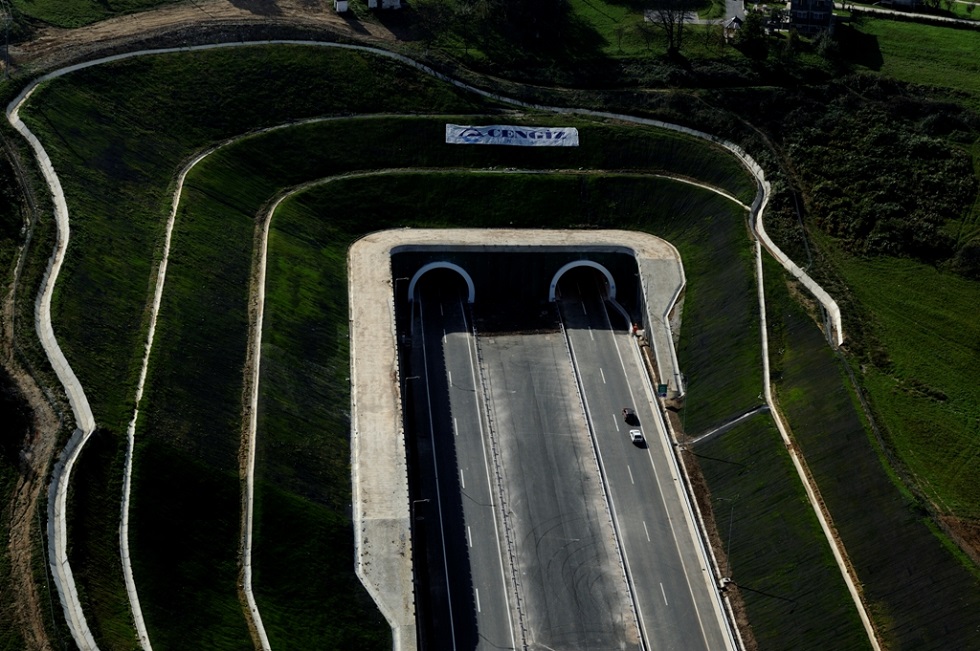
How much of the A1 has been completed? What areas are currently under construction?
About 90 km of the 334 km route have been completed so far. Those areas include an 81 km span between Drivuša and Tarčin and a 10 km span between Bijača and Čapljina.
There is 30 km of motorway under construction in the following regions: 11 km between Svilaj and Odžak and 9 km between D. Gračanica and Tarčin. The 10km between Čapljina and Počitelj, was recently contracted to China State Construction Engineering Corporation Limited and is scheduled for completion in 2021.
This means that there will be about 120 km of the 334 km route completed within the next couple of years.
Here is a video from JP Autoceste FBiH, which provides an overview of the route:
And a September 2019 video update on the section between Vranduk and Ponirak (near Zenica):
For more information and updates on the construction of the A1, check out the JP Autoceste FBiH website here.
To follow infrastructure developments and updates in Croatia and neighboring countries, follow our Travel and Lifestyle pages.
Flights to Croatia: Ryanair Returning to Osijek in 2020?
November 7, 2019 - Ryanair could reopen their connection to Osijek, with plans to bring about five thousand passengers to Slavonia next year.
This was said on Tuesday at the WTM World Tourism Exchange in London after Croatian Tourist Board Director Kristjan Stanicic and Tourism Minister Gari Cappelli met with representatives of the low-cost airline, reports Novac.hr.
Namely, they discussed joint promotional projects that Ryanair would promote Croatian destinations and bring more guests to the airports to which it has flown so far, i.e., Pula, Zadar and Rijeka. Still, the minister made it clear to them that Croatia intends to develop the entire country equally in terms of tourism.
“We have made it clear to them that the policy of this Government is the development of the continent and that our wish is to connect the green and the blue. We told them that as the Government, we insisted on opening the line to Osijek at least four months a year. According to Ryanair, we will give a letter of intent to reflect on the quality of living in Croatia. It is not in our interest to have a peak season only in three or four destinations but to develop Croatia well. Stanicic will cooperate with his team in the next ten days and with Osijek Airport. The plan is to fly to Osijek from June to September and establish two to three flights. By the way, this company has brought 310,000 passengers to Croatia this year, they plan to reach 400,000 passengers, and their strongest base is Zadar."
On the second day of the fair, they also met with the world's largest tour operator - TUI.
“They brought 200,000 passengers to Croatia this year, and they plan to increase that number by 20,000. It will also increase the number of its charter flights,” Stanicic said.
“This increase in the number of passengers will, of course, require more Croatian workforce in the coming season. Cappelli has already announced that foreign labor import quotas will grow to 30,000 work permits. This year the quota amounted to 21,000 work permits. Cappelli also used his visit to the fair to animate his colleagues from other European countries to make stronger choices for financing tourism projects through European funds, especially since Croatia will take over the EU presidency at the beginning of the year.
We are talking about turning an initiative supported by 13 countries to express a wish for tourism to be in a better position during these six months of Croatia's EU presidency. Spain has proposed setting up a committee on Transport and Tourism. The goal is that there is one committee to deal with tourism, since 10 percent of people in Europe work in tourism, and tourism accounts for a large share of the GDP of many countries. It is the third strongest industry in the world. We will demand that certain funds can finance projects in tourism, such as health tourism,” concluded Cappelli.
To read more about travel in Croatia, follow TCN’s dedicated page.
HeadOnEast: How to Make the Most from a Weekend in Eastern Croatia
October 23, 2019 - Even for many Croatian residents, eastern Croatia is a relatively unknown destination, so what is there to explore in a weekend? TCN decided to HeadOnEast on a family road trip to find out.
We had been discussing a weekend in Budapest or Vienna. That is one of the great advantages of living in Varazdin - there is so much that is in driving distance. But in the end, we made a family decision to go in an entirely different direction for a weekend of family discovery - Slavonia.
The initial publicity from the HeadOnEast - Hedonist@Slavonija has died down now that Days of Croatian Tourism is behind us and the tourism chiefs are safely back in Zagreb, but those few days reignited my enthusiasm for eastern Croatia, and the family seemed to like the photos I was sending back. Could we have a more fun weekend in Slavonia rather than Budapest or Vienna? We decided to find out.

School finished at 13:15 in Varazdin, and we were on the road by 15:00, destination Bilje just outside Osijek, where we would stay with friends. The journey time was much shorter than I had imagined, just over three hours via Zagreb. Slavonia was actually closer than most of the coast.
The roads were clear and we made good progress and as we turned off the main Belgrade motorway closing in on Osijek, a huge church appeared on the horizon. But really massive.
Djakovo Cathedral. It was only just off the road, so we decided to stop for a quick wander around.

And what a pretty little place Djakovo is, with one of the nicest main squares in Croatia.

And the cathedral is outstanding, both inside and out. Mass was underway and so we snuck in - this photo above is just from one of the sides, not the main altar.
We debated on whether or not to visit the famous Djakovo Lipizzaner horses, but decided that we would save that for next time as we wanted to press on.

Downtown Osijek of course his its own mightily impressive cathedral from the same era and architect, some 3.5 million bricks in all towering over the city skyline.
There was a really nice vibe around town early on the Friday night, a wonderful place to walk around and explore the historic streets and buildings.

Being on the Drava, Osijek has its own 'riva' just as in Dalmatia, a place of space, nature and people watching. A nice little spot for a coffee on arrival.

it was my family's first visit to Slavonia and I wanted them to see as much as possible, and the walk along the river to Tvrda, or Fortress, was magical. And although the fortress and old town date back centuries, some rather impressive changes and upgrades are in process, such as this spectacular new square, which was until recently mostly a muddy parking lot.
And when the old town comes alive, it really comes alive. Things were a lot quieter during our visit, but take a tour of the HeadOnEast gourmet festival earlier this month in the video above.
Osijek surprised us all with its beauty and the sheer number of historic buildings and wide tree-lined avenues - gllimpses of its past glories. Get more of a feel in this walking tour above, organised by locals with a lot more knowledge than this fat British blogger.

And so to our accommodation, and one which we were all looking forward to. A weekend without gadgets in the natural beauty of OPG Mario Romulic just outside Bilje.

Mario is a good friend of mine and is diversifying from his very successful career as one of Croatia's premier photographers to open his own organic farm next to his home. It is fantastic! I stayed there a couple of weeks ago for the first time, slept like a log and woke to the clucking of hens.
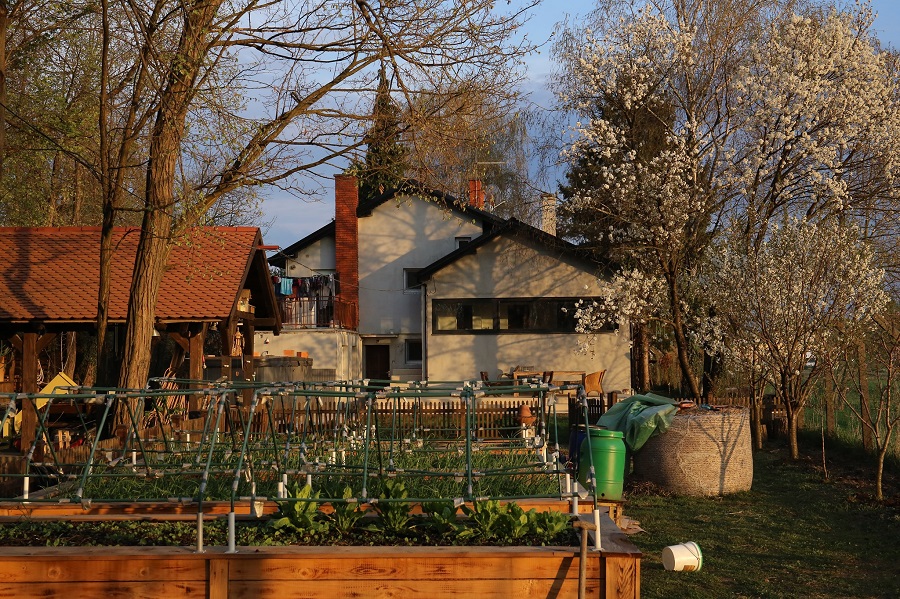
And all around the wooden house, organic produce leading to the family home. The kids loved it, especially the 15 cats (mostly tiny kittens) which were roaming freely with the hens.

But we had also come to explore, and the first stop was a visit to the legendary cellars of Ilocki Podrum, Croatia's most decorated winery and purveyors of wine for the Royal weddings of William and Harry, as well as the Queen's coronation back in 1953 - learn more about that and the most expensive bottle of wine in Croatia.
But before the tour of the cellars, a little breakfast. A glass of Traminac with the most unusual-sounding breakfast dish I have ever come across. Literally translated - Torn Underpants. They tasted a lot better than they sounded.

The Ilok cellars are incredible, the stories even more so, and the wines even more so than that. There is a separate article coming on TCN, but in the meantime, just visit!

And plenty were visiting, even in mid-October. Just one of the day's tour groups from the United States. Despite its position as the easternmost point of Croatia, Ilocki Podrum receives some 70,000 tourists a year, 45,000 of them foreign.

But while I was aware of the wines, I had no idea that tourism at Ilocki Podrumi was also booming in addition to the wine. The estate of Principovac is located in splendid isolation outside of town, a very popular wedding venue and complete with restaurant, quality accommodation, tennis courts and even some golf. A really great conference centre and place to escape the stresses of life.
And to party. The New Year's Eve festivities for 500 guests are quite something apparently. Take in the view in the video above.

There was just enough time to visit the compact old part of the town of Ilok as well. Really rather pretty and definitely a destination for a relaxing weekend in its own right.

Slavonia is VERY flat and we loved the golden autumnal colours as we drove, as well as several very quirky things along the route. The famous Slavonian straw artist has been busy in the region...

And then, finally, the chance to fill in one of the biggest gaps in my knowledge of Croatia - Vucedol.
And what a gap it turned out to be. I knew that there was some claim to ancient civilisation in eastern Croatia, but I had never researched it too much, and so the Vucedol Museum was quite a shock. For this modern-day suburb of Vukovar had once been as important as Paris today in terms of settlements in Europe.

And the discoveries of Vucedol place it very favourably with other world-famous cultures such as the pyramids in Egypt, Stonehenge etc. And yet very little is known internationally about Vucedol.

A very developed civilisation which gave the world the oldest calendar in Europe, the first metal casting of tools, and some rather funky fashion 5,000 years ago.

And rituals of human sacrifice.
More on Vucedol coming soon, but check out the museum, it is one of the very best in Croatia and a great family attraction. And the enticing thing is this - only 10% of the area has been excavated. Imagine what else is waiting to be found if the other 90% is ever excavated. Croatia could be home to one of the world's most important archaeological sites.
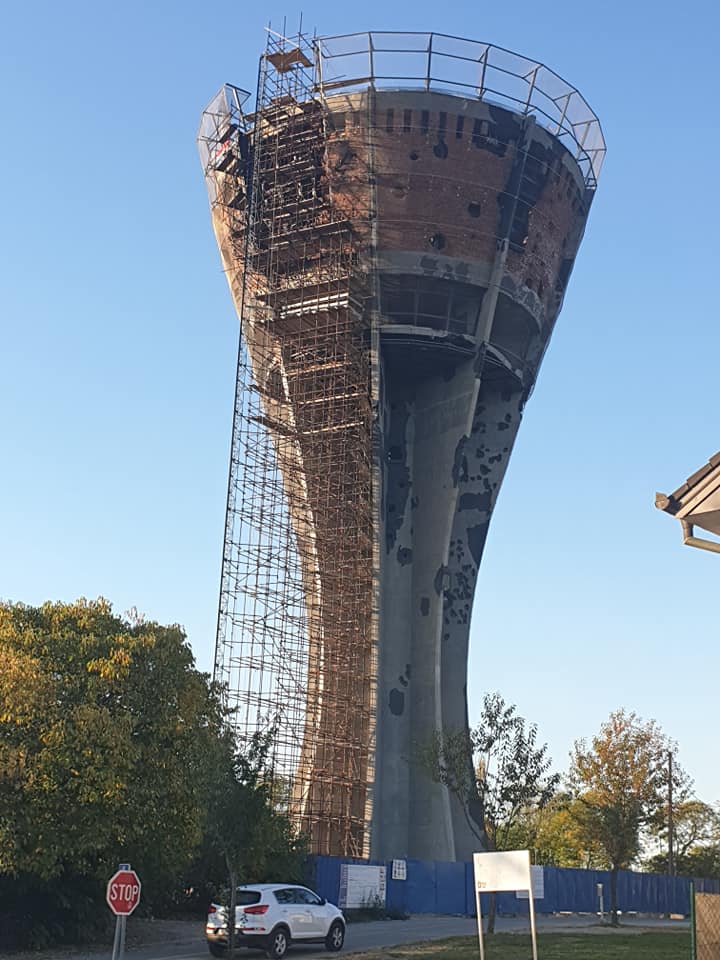
From the ancient past to the very recent past, as we visited probably the most famous building in eastern Croatia and symbol of the suffering of the heroic city of Vukovar, which is now under reconstruction.

I had planned on exploring Vukovar on a future visit, but as we were so close, we decided to drive through. The iconic water tower in the distance, the Danube separating Croatia from Serbia.

And cruise tourism, the type you rarely read about in the news, but growing slowly and bringing tourists to the east - cruises down the River Danube. Still going strong in mid-October.

And so to our next stop - to the oldest continuously inhabited town in all Europe, home to some of the more sensational Vucedol finds. Vinkovci, a fascinating town we covered in some detail recently.

And since my visit a few weeks ago, yet one more sensational discovery - wonderfully preserved remains of a Roman chariot and horse. What other secrets await to be discovered - from Roman times, the Vucedol era, and others?
There was lots to ponder and discuss as we headed back to our organic paradise on Saturday night.

Sunday morning was spent with Barba Mario. As far away from the stress of modern life as one could hope to be.

We really enjoyed our tour of his wonderful project, which you can learn more about on Facebook. and all the little details, such as this little bug hotel, which provides the right conditions for wild bees to thrive. They are essential as they work in much lower temperatures than ordinary bees, therefore pollinating where pollination would otherwise not happen.

And after a tour, a little breakfast - all locally sourced or home-grown.

Slavonia is known for many things, including the best hospitality in all Croatia, and while we had planned to leave a little earlier, a tour of Mario's 'Meat Church' and an invitation to lunch proved too hard to resist.

And while Mario slow-cooked the meat, we drove the one kilometre necessary to one of the natural jewels of Croatian tourism, Kopacki Rit Nature Park.

The weather was perfect, the nature more so - one of the most important wetlands in Europe, with over 300 species of birds.

And nicely constructed wooden walkways took you through the marshlands - beautifully done.

And we were not alone. Another boat full of tourists heads out into the Kopacki Rit waterways.
Meanwhile...
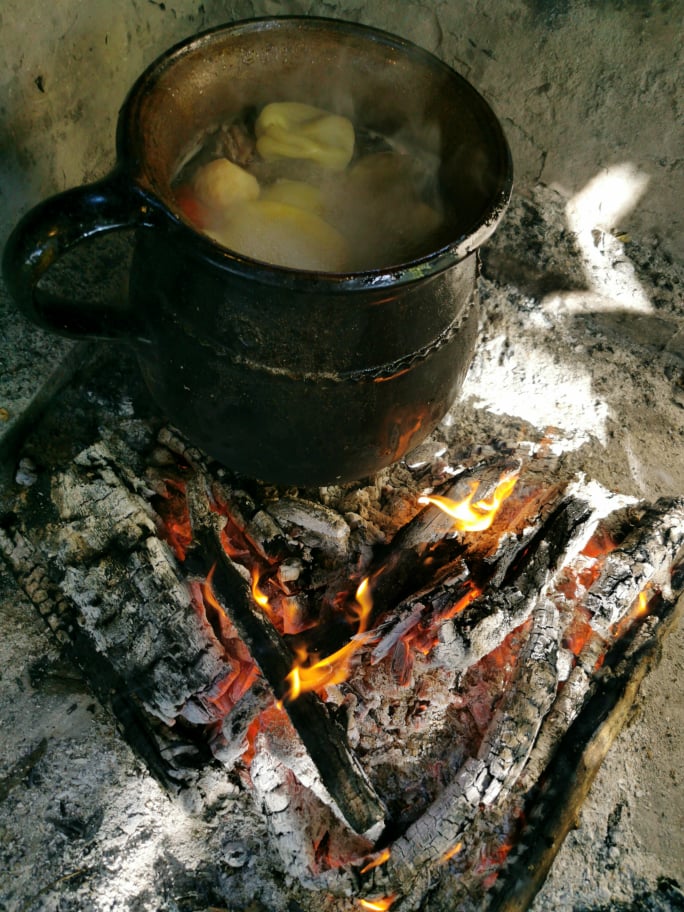
Romulic the photographer combines with Romulic the masterchef.
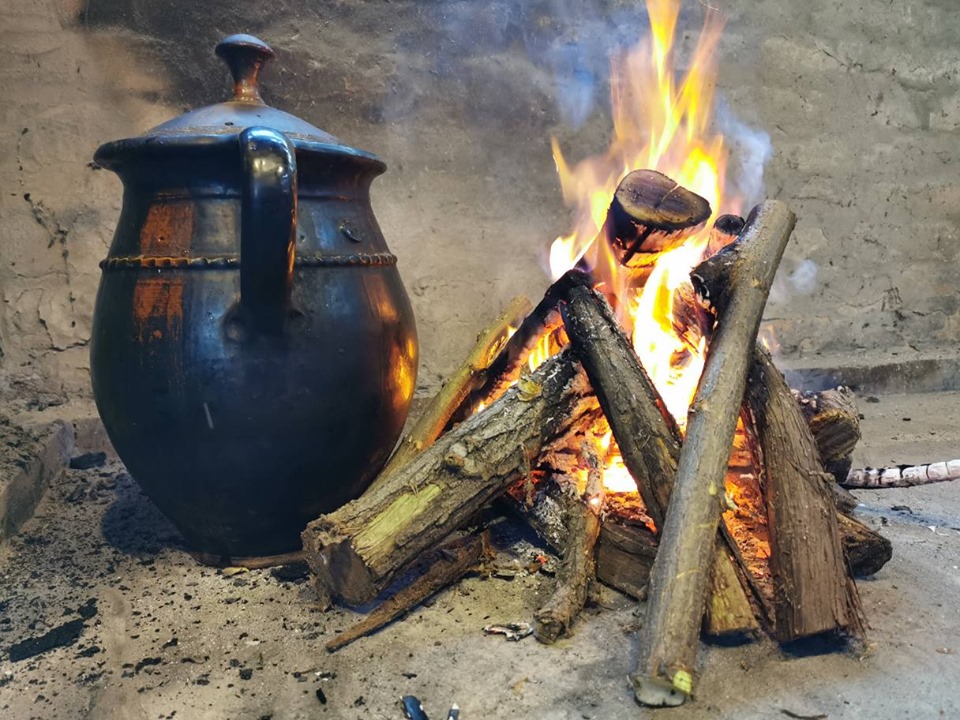
Cooking as It Once Was.
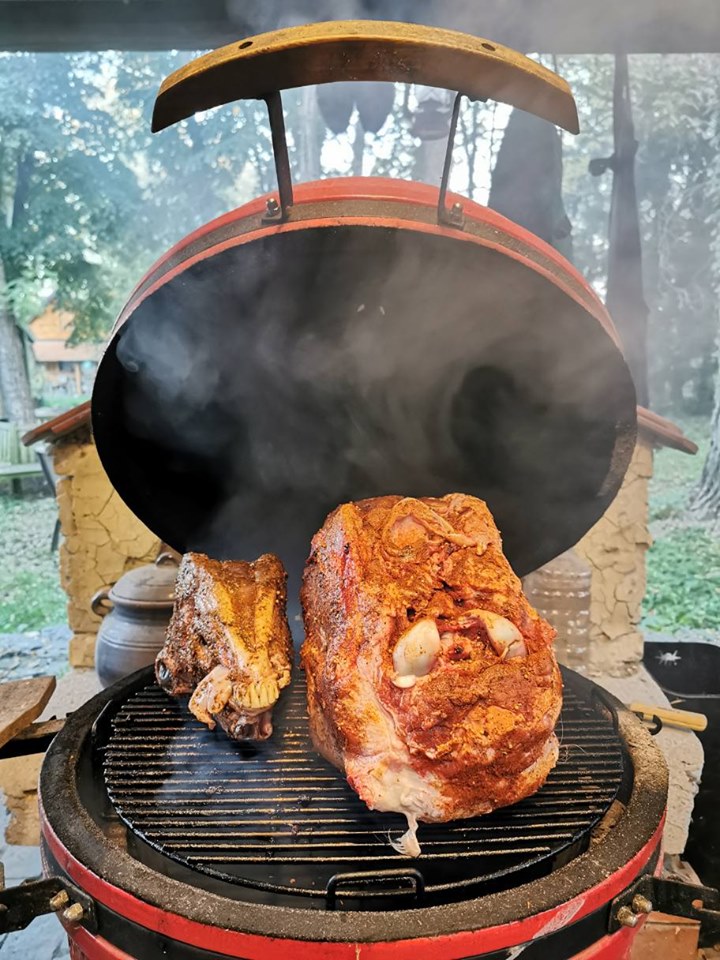
A hearty lunch, great company and fabulous Slavonian hospitality. It was with some regret that we packed our things and headed back west to our regular lives.
Budapest or Vienna for the weekend? Why not explore the jewels which are much closer to home instead?
Here are 10 things that I learned about eastern Croatia this month.
Make Slavonia Great Again: Oak Barrel Production Returns to Croatia
October 21, 2019 - Slavonian oak is among the best in the world and particularly sought after by the wine industry. And now Slavonian oak barrels are being made once more in Croatia.
The first time I heard about Slavonia was back in 1996. I had no idea that it was in Croatia, and my introduction to the region was due to one of its finest products - Slavonian oak. In my new job as a wine merchant almost 25 years ago, I learned that the three most highly prized types of oak for ageing wines came from France, the United States, and Slavonia.
Time passed, and I moved to Croatia and eventually visited Slavonia, the region with the famous oak. These boys sure knew how to build a wine barrel - the lead photo is of the 53,000 litre barrel in Kutjevo.

Below, one of 9,000 litres in Ilockli Podrum, scene of our weekend visit, and currently the largest barrel in the Ilok cellars. It used to be one of the smallest, but all the big ones were destroyed during the war. And it was during my tour of Ilok that I learned the most incredible thing. While the winery continued to use Slavonian oak for the ageing of its wines, some of which were served at the Royal weddings of both William and Harry, as well as the Queen's coronation back in 1953, until very recently, it was impossible to order these barrels in Croatia.
For there was nobody in Croatia making Slavonian oak barrels for the Croatian wine industry or any other. They continued to make Slavonian oak, but the barrels were ordered from coopers in Italy or France. Slavonian oak quality going to Slavonian wine quality via a foreign country's expertise. Crazy.

The biggest wine barrel ever made from Slavonian oak, some 75,000 litres and still in use today in Erdut. And this very same barrel is linked to the rebirth of the Slavonian oak barrel industry...
Let's go back 40 years or so to days when life was simpler in Djurdjenovac and Slavonian oak barrels were produced locally.
A 56,000 litre barrel? Why not bigger? Enter the monster 75,000 litre barrel now in Erdut, above.
At the end of 2017, the latest chapter of Slavonian oak production was written. Master cooper Julijo Pepelko and his son Hrvoje teamed up to start Pepel Co, once more making barrels from Slavonian oak. And not only that, but some of the oak barrels were put to use to make an entirely new and totally unique product - Croatia's very first whisky, PEPEL No. 1.
We have yet to try it, but it is on the TCN list. In the meantime, let's celebrate a little bit of Slavonian quality which has come home.
Learn more about the oak barrels and whisky of Pepel Co from the official website.
Golden Slavonia: A New Brand to Improve Quality Tourism of Region
October 17, 2019 - Golden Slavonia is an integrated quality management project that brings together the Tourist Boards of Pozega, Lipik, Pakrac, Pleternica, Kutjevo, and the Velika Municipality, and the company Feel IQM.
Namely, HRTurizam writes that integral quality management is a model for the development of Pozega-Slavonia County as a tourist destination called ‘Golden Slavonia’. The project coordinator is the Pozega Tourist Board director Silvija Podoljak, while all tourist boards in Pozega-Slavonia County are participating in the project.
The goals of this project are an essential segment for each individual stakeholder, namely: increasing the number of quality entities, increasing the number of guests, increasing revenue, improving the quality of the destination, improving the quality of events, connecting stakeholders within the destination, creating an experience economy, getting to know the destination and consolidating the Golden Slavonia brand.
With this mutual synergy, they hope to extend the season, raise values and revenues, and ultimately achieve satisfied guests and residents. This goal requires constant coordination, training, and open communication with each other, and measuring the quality of each segment, which ultimately represents the evaluation of the entire destination.
As part of the project, on Monday, October 7, workshops were held at the Entrepreneurial Incubator in Pozega with target groups of tourism entities, who expressed great interest in the project, the need for this type of education and networking, and the willingness to work continuously for results.
IQM is the systematic, integrated quality management within a destination. The aim of "IQM Destinations Golden Slavonia" is to harmonize quality standards between stakeholders in tourism, to equalize the quality of business of all participants, and to encourage excellence.
The prerequisites for implementing IQM in a destination are several successful destination projects so far, which are the basis for creating standards in quality, communication and the desire for progress in the destination across all management levels, the existence of strategic development documents, and interest in quality synergy in the destination.
The project will involve entities that contribute to the development and quality of tourism (owners of accommodation facilities, caterers, OPGs, attractions, tourist agencies, souvenir shops, associations, etc.).
The "IQM Golden Slavonia" project monitors quality, measures growth, progress and implementation, publicly presents standards, monitors stakeholder challenges, respects access to responsible tourism, raises stakeholder awareness of the importance of tourism in the destination, and creates circumstances of excellence. Partners receive a report at each implementation phase.
Given that there are more entities interested in participating in this project that have not applied, the deadline for applications has been extended to 2 November 2019.
To read more about travel in Croatia, follow TCN’s dedicated page.
HeadOnEast, the After Movie: Watch Osijek Old Town Shine (VIDEO)
October 13, 2019 - HeadOnEast, a new festival celebrating the very best of Slavonia and surroundings, brought Osijek to life at the recent Days of Croatian Tourism: a video appreciation.
It is not the destination where you end up but the memories you create along the way.
I like that.
In fact I really like pretty much everything about my visit to Osijek last week. The tourism people in the east realised that they had one really big opportunity to impress the big tourism chiefs from Zagreb as Days of Croatian Tourism was held in continental Croatia for the first time. And they took full advantage.
I doubt that there was a single visitor who was disappointed by what they found on the three-day trip east, and I am guessing that expectations were more than exceeded by the majority. It was certainly an education for all, and here are 10 things which I learned on my trip east. A really wonderful region.
The highlight was to be found in Osijek Tvrda, the old town, which not only hosted the main Days of Croatian Tourism ceremony, but also was the scene for the outstanding HeadOnEast foodie festival. The old town was bathed in light, street food, concerts, wine, and fun, fun, fun. As nice an atmosphere as I have come across at a festival in my time in Croatia.
And in order to help the memories created along the way, a wonderful movie of the event has just been released by the regional tourism board, which you can watch below.
I really hope that this HeadOnEast initiative can become the catalyst of a campaign to develop tourism in the east, starting with a campiagn of education at the national level, telling locals about the magic on offer east of Zagreb.
And as for that genius branding, here is the background behind the concept of Head on East - Hedonist - really clever.
To learn more about eastern Croatia, here are 25 things to know.



